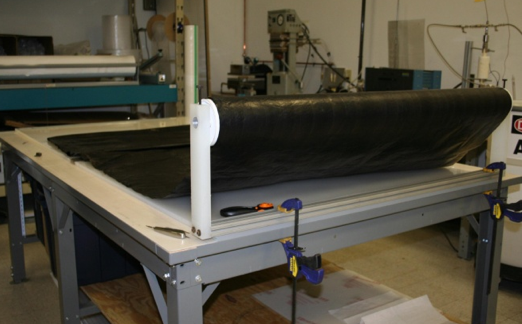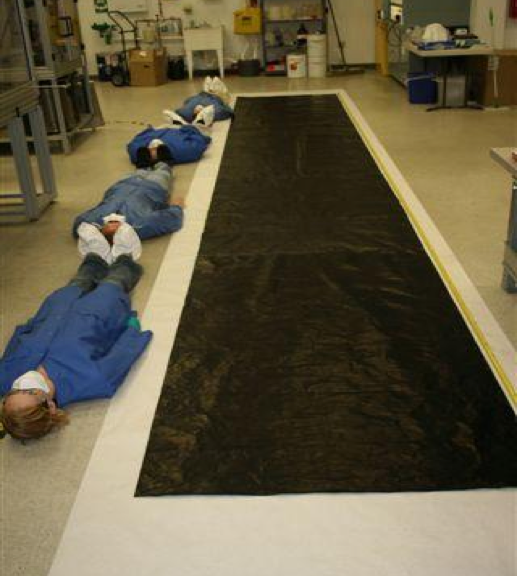A guest blog by John Dorr, Vice President of Business Development Nanocomp Technologies Inc.
Despite all the fuss over nanotechnology, it’s surprisingly difficult to get a clear sense of how the technology is contributing to new products. So when the company Nanocomp Technologies Inc. approached me with an idea of writing a guest blog about what they are doing with carbon nanotubes, I jumped at the chance. I’ve been aware of Nanocomp’s business for some time now and know the company’s President and CEO Peter Antionette, and have been both impressed and intrigued by their use of carbon nanotube sheets and yarns. At the same time, I didn’t want 2020 Science turning into an industry PR conduit. So I agreed to the guest blog with one condition – that it stick to science and technology, and not turn into a corporate publicity piece. As it turns out, John Dorr’s piece is about as far from the hype that often accompanies nanotech stories as you can get. At the same time, this is clearly a significant and potentially important technology – one to watch I think. Andrew Maynard
In the early 1990’s, a new form of carbon was discovered with highly unusual properties – it was strong, light, and conducted electricity and heat exceptionally well. Because the material was formed from incredibly thin tubes of carbon atoms, it rapidly became know as carbon nanotubes – or CNT for short.
Since their discovery, researchers and businesses have been working hard to exploit the unusual properties of carbon nanotubes – not as easy a task as many people initially thought. However, new and commercially viable uses for the material are now beginning to emerge.
Because of their shape and format, carbon nanotubes can be used in ways similar to other fibers. As a result, carbon nanotube sheets, yarns and their derivative products are beginning to be introduced into the marketplace. The most productive and scalable manufacturing method in play today employs a gas phase pyrolysis process for making very large format CNT non-woven textile sheets directly from the reactor without post processing. As the process grows, a mesh of interconnected, millimeter length CNTs emerges as opposed to a loose powder of micron-scale CNTs. The result is a product that is fundamentally different from Bucky papers, which are made from short tubes that have been dispersed in solvent and subsequently membrane-filtered into film-like structures. They are similar in appearance only.
One example of this difference is in mechanical performance. The mechanical strength of the raw, large format sheets is up to 1 GigaPascal (GPa) — five to twenty times better than buckypaper and in the class of m
etals and alloys. Moreover, their electrical conductivity–typically greater than 2 x 106 Si/m–makes them ideal for replacing copper shielding in weight sensitive applications such as for aerospace.
It is also possible to impregnate rolls of these CNT sheets using commercial equipment with a wide variety of thermoset resins such as bismaleimide toughened epoxy (BMI). Figure 1 shows an example of a roll of these sheets.
In addition to sheet material, in a serendipitous blend of traditional and future industry, CNT yarns can be produced by harvesting carbon nanotubes from the reactor onto spools of finished spun material, much like traditional textile-like threads. These yarns can then be braided on commercial wire braiding machines to produce CNT wires of various gauge sizes, as is seen here:
Although the base CNT material is conductive, it can be post-processed to further increase conductivity using a very basic chemistry. This is particularly useful for applications requiring particularly high conductivity – including for application as a high performance, light weight electromagnetic interference (EMI) shield.
Today, Nanocomp can fabricate sheets that are about four by eight feet long. The sheets can be easily seamed together into panels (see figure 2) or into rolls of any length desired. Such rolls are the standard form factor needed for pre-pregging or other types of resin infiltration, so the material can be easily integrated into such processes.
There are many applications for these materials generally focused on exploiting the unique electrical, thermal and mechanical properties of carbon nanotube sheets and yarns:
Electrical—applications include lightweight conductors, EMI shielding, ground planes and lightning protection, among others. The excellent shielding quality allows CNT material to be used as a substitute for copper braid in single- or multiple-conductor shielded cable. Weight savings from this step alone may range from 30 to 50 percent as compared to conventional materials. Another application is to replace copper conductors at very high frequencies, where the conductivity of CNT yarns can outperform copper.
Thermal—applications include heat straps, thermal interfaces for Integrated Circuit (IC) cooling and thermal interface materials. The thermal conductivity of individual carbon nanotubes can be very high, exceeding 40,000 Watts per Kelvin per meter (W/m-°K) at the nanoscale. Thermal conductivity at the macroscale, as seen in CNT sheets, is generally around 60 W/m-°K). As a comparison, copper has a thermal conductivity of around 400 W/m-°K. However, CNT sheets have a density of 0.5 g/cc while copper has a density of almost 9. On a weight-for-weight basis the CNT sheets have 3.5 times better thermal conductivity than the metal. The material also acts like a black body at wavelengths in the near-UV to the long IR, meaning that strips of the material can be used very effectively as Joule heaters at very high specific power.
Mechanical—potential applications include hybridized vehicular and body armor solutions as well as structural composites for a wide range of applications. The lightness and strength of carbon nanotubes makes them particularly attractive for forming lightweight yet strong materials, and the carbon nanotube sheets produced by Nanocomp are particularly versatile in this respect. Preliminary work in armor has focused on the use of the Company’s CNT sheets in thin, lightweight composites capable of stopping civilian handgun threats while maintaining durability and flexibility. While Nanocomp continues to improve the mechanical properties of our materials, we have achieved tensile strength values ranging from 1.1 – 3.5 GPa with CNT yarn, which compares favorably with Kevlar® and its published value of 2.9 GPa whether in sheet format or as yarn that can be subsequently woven into a hybrid fabric.
As with any advanced material, safety is an obvious concern when creating carbon nanotubes. As mentioned previously, most CNT manufacturers develop products as a powder of short tubes. They can become easily airborne and pose an inhalation hazard. Nanocomp does not produce material in this form, in fact it does not produce short CNTs at all. Instead, its reactors produce sheet and yarn articles into which the company’s long CNTs have been inexorably bound, a property that has been borne out by rigorous testing done in partnership with leading government and academic labs. The sheets and yarn articles do not release nanomaterial under typical industrial processing, handling, and storage, and it is the conclusion of outside authorities that the company’s CNTs are simply too big to become airborne or be respirable.
John Dorr is Vice President of Business Development at Nanocomp Technologies, a manufacturer of CNT sheet and yarn materials and value-added products. Nanocomp is one of the only companies to efficiently manufacture and fill customer-ready orders for such carbon nanotube products, and widescale adoption of the material is really quite feasible. The company is set to expand its manufacturing capabilities within the coming year, in response to growing government and commercial market demand. To learn more see: http://www.nanocomptech.com/
[2020 Science has no commercial involvement with Nanocomp, and did not receive any form of financial support for this guest blog. And as you would expect, the views expressed here are Nanocomp’s, and not necessarily mine – just wanted to make that clear 🙂 Andrew Maynard]


